Compostable Electronics: Tech That Turns Into Soil

TL;DR: Shifting baseline syndrome explains why each generation accepts environmental degradation as normal—what grandparents mourned, you take for granted. From Atlantic cod populations that crashed by 95% to Arctic ice shrinking by half since 1979, humans normalize loss because we anchor expectations to our childhood experiences. This amnesia weakens conservation policy and sets inadequate recovery targets. But tools exist to reset baselines: historical data, long-term monitoring, indigenous knowledge, restoration projects, and education that teaches abundance, not just current conditions. Your grandchildren will inherit whatever baseline you help set today.
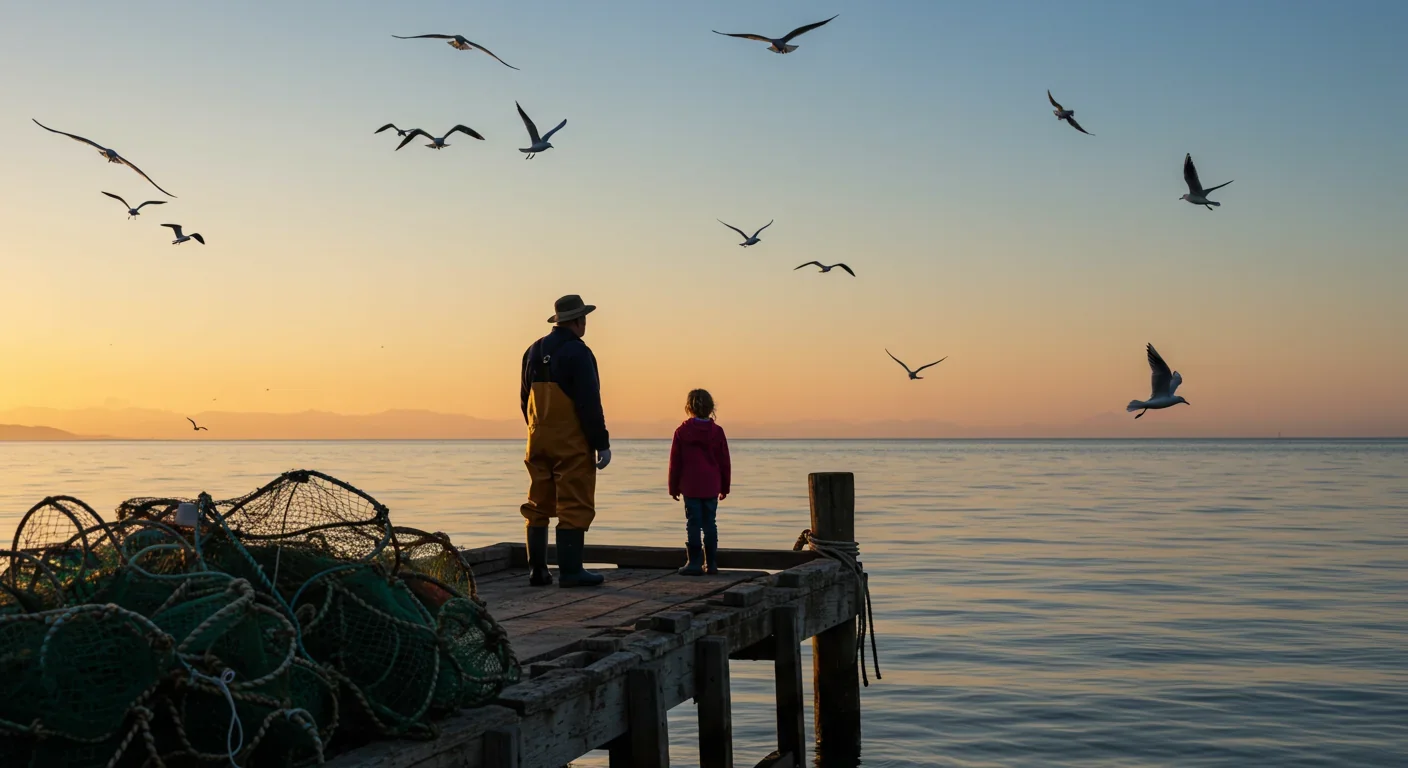
In 1992, nearly 40,000 people lost their jobs when Canada's once-abundant cod fishery collapsed. But here's the twist: when fishing resumed 32 years later in 2024, the allowable catch was just 18,000 tonnes—a fraction of the 240,000 tonnes permitted before the crash. Yet younger fishers celebrated the reopening, viewing these meager quotas as a return to normalcy. Their grandparents, who remembered seas thick with cod, knew better. This is shifting baseline syndrome in action—and it's quietly rewriting how every generation perceives environmental loss.
Shifting baseline syndrome describes a troubling phenomenon: each generation inherits a degraded planet but perceives it as the natural state of the world. What your grandparents mourned as ecological catastrophe, you accept as Tuesday. The coral reefs you see as vibrant, your grandmother remembers as doubly lush. The "pristine" forests you hike through are shadows of what your great-grandfather knew. Without realizing it, we're collectively forgetting what Earth once was—and that amnesia is undermining our ability to protect what remains.
Marine biologist Daniel Pauly coined the term "shifting baseline syndrome" in 1995 after a simple observation: fishermen consistently claimed fish stocks had "always been this low." But when Pauly examined historical records, he found something alarming. Each generation of fishermen used the abundance they witnessed at the start of their careers as their mental baseline—ignoring the far greater abundance their predecessors had known.
Pauly's insight revealed a cognitive trap. North Sea fishing baselines, for instance, were set in 1970—after a century of mechanized fishing had already devastated stocks. Using 1970 as "normal" meant accepting a depleted ocean as the reference point for recovery. It was like trying to restore a mansion by looking at photos taken after it had already burned halfway down.
The syndrome extends far beyond fisheries. From Arctic ice to urban air quality, from coral reefs to songbird populations, humans are extraordinarily good at normalizing loss. The mechanism is simple but insidious: we anchor our expectations to whatever we experience in our formative years, then perceive any further decline relative to that already-degraded baseline. The result? A gradual, generational amnesia that makes catastrophic losses invisible.
The Atlantic cod collapse offers a masterclass in baseline erosion. For a thousand years, European fishers followed cod across the North Atlantic to North America. Annual catches ranged from 150,000 to 250,000 tonnes throughout the 19th and early 20th centuries—a level that seemed sustainable until technology changed the game.
In 1957, annual cod catch stood at 254,500 tonnes. By 1968, it had exploded to 810,000 tonnes as factory trawlers vacuumed the ocean floor. Then came the crash: by 1992, catches plummeted to just 41,000 tonnes. Northern cod populations had fallen to 1% of historic levels. The Canadian government imposed a moratorium expected to last two years. It lasted 32.
What caused the collapse? Government mismanagement and flawed population models that assumed constant growth, ignoring climate variation and ecosystem limits. More critically, policymakers suffered from their own shifting baseline—they couldn't fathom that cod stocks, which had fed millions for centuries, could actually disappear.
A 2024 study reconstructing 1,100 years of cod fishing revealed just how dramatic the baseline shift had been: Viking-era cod were 25% larger and lived three times longer than today's fish. Overfishing, not climate change, drove the size decline. But without those historical records, modern observers would never know how diminished current cod populations truly are.
The reopening of the fishery in 2024 illustrates the syndrome's persistence. Despite cod biomass stabilizing at just 12% of 1960s levels, updated stock assessments moved Northern cod from "critical" to "cautious" status. The new quota allows harvesting 6% of biomass—conservative compared to pre-collapse rates, but still a fraction of historical abundance. For young fishers who never knew the ocean thick with cod, these modest catches feel like restoration. For their elders, it's a pale shadow.
Three interconnected psychological mechanisms drive shifting baseline syndrome, creating a perfect storm of environmental amnesia.
Generational Anchoring: Humans form their environmental baselines during childhood and early adulthood. Whatever abundance—or scarcity—we encounter during these formative years becomes our internal reference point for "normal." A child growing up today sees a Great Barrier Reef that has lost more than half its coral cover since 1985, with repeated mass bleaching events in 1998, 2002, 2006, 2016, 2017, 2020, and 2022. For them, a bleached reef isn't a catastrophe; it's just how reefs look.
Researchers studying three generations of fishers in the Gulf of California found quantitative evidence of this generational gap. Older fishers could name five times as many species and four times as many fishing sites as younger fishers. They reported historical catches 25 times larger than those young fishers considered typical. Within just three generations, the baseline had collapsed—and with it, any sense of what had been lost.
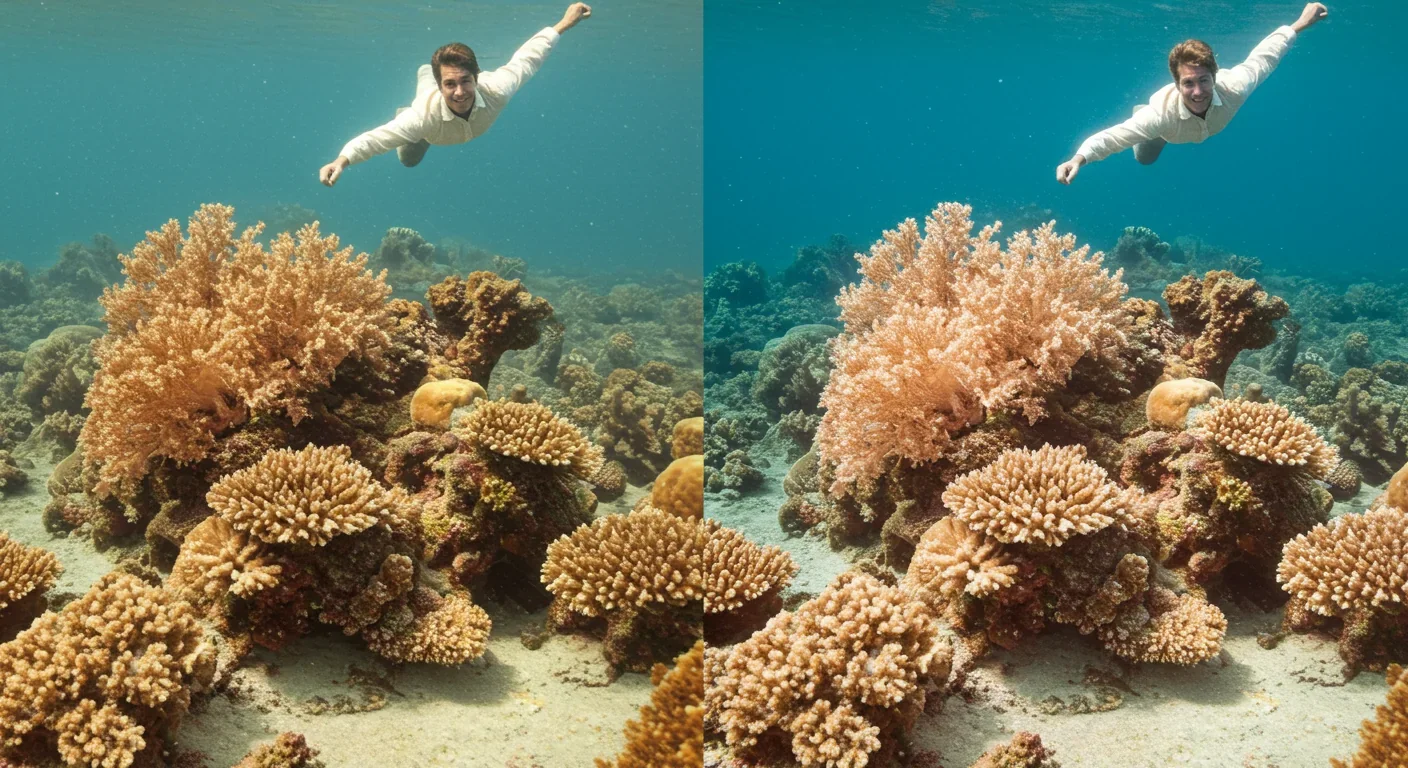
Presentist Bias: Humans privilege recent data over historical information, treating the current state as knowledge and dismissing the past as mere anecdote. This "presentism" plagues both policy and science. When U.S. fisheries regulations aim to rebuild stocks to 1980s levels, they're targeting a baseline that's already severely depleted. It's the environmental equivalent of thinking a half-empty glass is full simply because you never saw it brimming.
Daniel Pauly described this bias sharply: fisheries managers treat data from the past 30 years as comprehensive knowledge while dismissing centuries of historical observation as "just stories." Yet those stories—ship logs, market records, indigenous oral histories—often contain the only evidence of pre-industrial abundance.
Adaptation and Normalization: Humans are phenomenally adaptable, which usually serves us well. But when applied to environmental degradation, adaptation becomes dangerous. Psychologist Peter Kahn studied children in Houston and Seattle and found that when asked about air pollution, most children could identify polluted cities—but not their own. They had normalized whatever air quality they breathed daily, unable to perceive their own environment's degradation.
This normalization extends to media and institutional memory. When tourism campaigns for the Great Barrier Reef showcase the 7% of coral unaffected by the 2016 bleaching event—while ignoring the 93% that suffered—they actively construct a false baseline. Visitors arrive expecting vibrant reefs based on marketing images, perceive the degraded reality as acceptable, and leave satisfied. The baseline shifts downward, aided by selective visibility.
Arctic Sea Ice: Satellite records since 1979 document a stunning transformation. Arctic sea ice area has fallen from approximately 7.5 million square kilometers in 1979 to 3.7 million square kilometers in 2020—a decline exceeding 50%. The melt season has lengthened by about 40 days. The proportion of ice five years or older has plummeted from more than 40% in the 1980s to less than 10% since 2010.
The decline accelerated to 4.7% per decade in the early 21st century, exceeding earlier predictions. Climate models now indicate the Arctic will experience ice-free summers before 2050 under all emission scenarios. Yet for anyone under 30, an Arctic with half as much ice as 1979 is all they've ever known. The shock their grandparents felt is unavailable to them—replaced by acceptance of a radically diminished polar ecosystem.
Caribbean Coral Reefs: Historical Caribbean reefs grew upward at 4–5 millimeters per year, keeping pace with rising seas for millennia. Today, average growth has slowed to less than 1 millimeter per year—just one centimeter per decade. Long-term monitoring of over 400 reef sites shows that reefs are now reaching a point where they can no longer match sea-level rise.
Modeling studies predict that by 2040, more than 70% of Caribbean reefs will be in states where structures are actively eroding. If warming passes 2°C, that figure climbs to over 99% by 2100. Multiple stressors—pollution, disease, overfishing, climate change, coastal development—act synergistically, accelerating the shift from coral-dominated to macroalgal-dominated ecosystems. Yet tourist marketing continues to portray the reefs as pristine, and visitors who've never seen healthy coral perceive degraded reefs as beautiful.
Urban Air Quality: A pilot study in Milan equipped technology enthusiasts with wrist-mounted monitors tracking PM1, PM2.5, PM10, NO₂, CO, CO₂, and volatile organic compounds. Participants walked 4.5 kilometers through the city, with monitors providing real-time pollution data. Pre-walk interviews revealed that 13 participants relied on vision, 7 on smell, and 5 on labored breathing to assess air quality—subjective measures easily distorted by adaptation.
Post-walk interviews showed participants gained awareness of pollution's spatial-temporal variation but remained uncertain about actionable responses. One participant admitted: "I have more knowledge, but I do not know how to use it." This gap between awareness and action reflects a broader challenge: even when people recognize degradation, normalized baselines make it difficult to perceive the urgency or scale of intervention required.
British Biodiversity: The United Kingdom has lost 19 million pairs of native breeding birds since 1966. Ninety-seven percent of wildflower meadows in England and Wales have disappeared since the 1930s. A quarter of UK mammals now face extinction risk. Yet only 3.22% of landscapes and 8% of marine habitats are effectively protected—far below the government's 30% target.
The Environment Act of 2021 set a goal to halt species decline by 2030 and increase abundance by 10% by 2042, using 2030 as the baseline. Given current declining trends, this approach would essentially maintain biodiversity at 2022 levels—institutionalizing a degraded state as the new official baseline. Researchers call this "institutional shifting baseline syndrome," where policy frameworks themselves encode acceptance of loss.
Shifting baseline syndrome doesn't just distort perception—it actively undermines conservation efforts and weakens environmental policy.
Inadequate Recovery Targets: When policymakers lack historical perspective, they set restoration goals that aim for recent degraded states rather than historical abundance. California's Water Infrastructure Improvements for the Nation Act (WIIN) of 2016, for example, mandates maximizing Delta water exports while preventing "additional adverse effects" on fish. This regulatory language fixes the current degraded state as acceptable, prohibiting further decline but not requiring restoration. As U.C. Davis biologist Peter Moyle observed, "Once a species is listed under the Endangered Species Act, the listing conditions tend to become the baseline conditions."
Similarly, the Great Barrier Reef's Reef 2050 Plan focuses on water quality improvement, reef restoration, and predatory starfish control—but does not address climate change, the root cause of repeated bleaching. Without tackling the driver of degradation, the plan essentially manages decline rather than reversing it.
Weakened Political Will: When the public perceives degraded environments as normal, political pressure for bold action diminishes. Masashi Soga of the University of Tokyo explains: "Shifting baseline syndrome can act as a powerful barrier by reducing social recognition of the problem." If younger generations don't perceive environmental loss—because they never experienced the abundance that was lost—they're less likely to demand ambitious conservation measures or support the economic costs of restoration.
This dynamic plays out in climate policy. A 2024 survey across Baby Boomers, Gen X, Millennials, and Gen Z in Spain found significant generational differences. Baby Boomers emphasized community responsibility over regulation, reflecting acceptance of current conditions. Gen Z, by contrast, showed higher anxiety about the future—69% felt anxious after seeing climate content online, compared to 41% of Boomers—and demanded systemic change. Yet the question remains whether heightened anxiety translates to sustained engagement or leads to burnout.
Policy Inertia and Corporate Memory Loss: Institutions suffer their own form of generational amnesia. When staff turnover occurs, organizational memory of past environmental conditions and transgressions fades. Regulations enacted to address previous problems may be weakened or unenforced as the urgency that created them is forgotten. Corporate memory loss can lead to repeated unsustainable practices, as lessons from past failures aren't transmitted to new decision-makers.
The UK's cross-party nature recovery assembly represents an attempt to counter institutional baseline drift by embedding biodiversity recovery into all sectors—agriculture, planning, transport—rather than treating it as a standalone issue. The goal is to prevent incremental policy creep where each sector negotiates minor exceptions that collectively result in continued decline.
Shifting baseline syndrome operates at both individual and societal levels, making it a socio-ecological phenomenon requiring multi-level interventions.
Loss of Intergenerational Transmission: Traditionally, knowledge about environmental abundance passed from grandparents to grandchildren through stories, shared experiences, and cultural practices. Indigenous communities have maintained accurate ecological baselines for centuries through oral histories, seasonal practices, and place-based knowledge systems. Aboriginal Australians, for instance, have maintained cultural connections to the Great Barrier Reef for at least 40,000 years, preserving knowledge of reef health across hundreds of generations.
But modern societies often lack these transmission mechanisms. Urbanization disconnects people from nature. Educational systems focus on recent scientific data rather than historical context. Media representations emphasize immediate crises over slow-onset changes. The result is what researcher Peter Kahn calls "extinction of experience"—a progressive loss of everyday interactions with nature that could anchor baseline perceptions.
A qualitative study on nature and mental wellbeing found that participants' childhood nostalgia—memories of holidays in nature, fishing with family, the smell of coastal air—served as powerful anchors for environmental values. Those who maintained connections to specific natural places across decades could perceive changes invisible to newcomers. But when such continuity breaks—through migration, development, or simply the passage of time—the baseline resets.
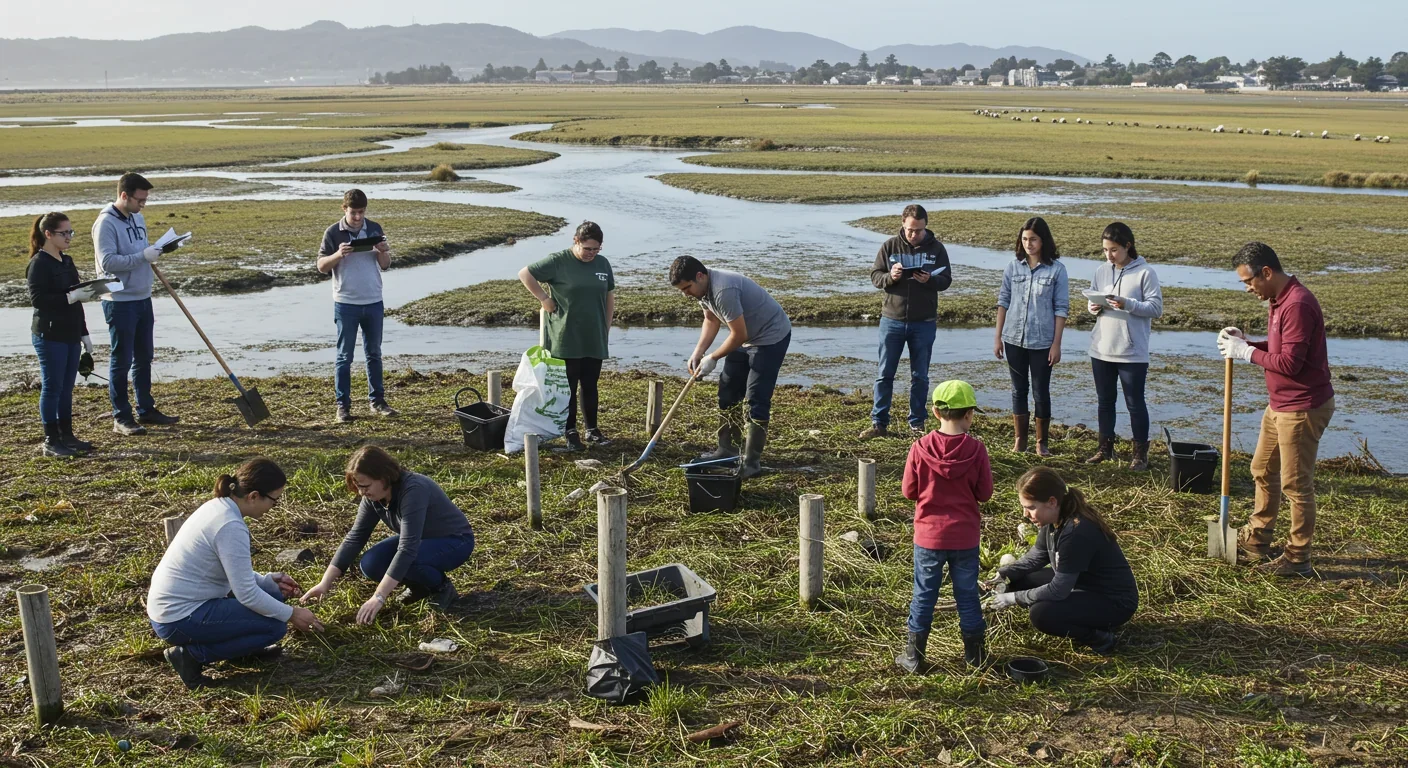
Media's Double-Edged Role: Media shapes environmental narratives in contradictory ways. On one hand, visual media can powerfully convey environmental loss: photographs of albatross colonies on Nightingale Island taken 66 years apart show dramatic declines in nesting pairs due to long-line fishing, which drowns approximately 100,000 albatrosses annually. Such images anchor perception of change.
On the other hand, media can normalize degradation. When the tourism industry created the hashtag #GBRtoday in response to the 2016 bleaching event—showcasing the 7% of coral that remained healthy—it constructed a false baseline. Similarly, media advertising fuels consumerism by continuously promoting resource-intensive products, creating a culture where rapid consumption and disposal feel normal rather than aberrant.
The framing matters enormously. Cultivation theory suggests that consistent media exposure shapes long-term perceptions of reality. If environmental media coverage focuses exclusively on doom without historical context or examples of restoration, audiences may become fatalistic. Conversely, if coverage ignores severity to avoid scaring audiences, it risks normalizing the unacceptable.
Educational Gaps: A BioScience study found that younger individuals tend to hold lower environmental baselines across climate change, biodiversity loss, pollution, and resource depletion. This pattern reflects an educational system that teaches current conditions without historical context. Students learn that coral reefs are threatened, but rarely encounter vivid descriptions or images of reefs in their historical abundance—teeming with fish in such density that early explorers reported being able to walk across their backs.
Combating this requires embedding historical ecology into curricula: using archaeological evidence, historical records, and paleoecological data to reconstruct past environments. The Florida Keys Coral Reef Eco-region Project, for example, researches archival records, maps, and personal papers to understand over-fishing impacts, providing students with data on what the third-largest coral reef system once was.
While shifting baseline syndrome is powerful, it's not inevitable. A range of individual, community, and policy interventions can reset baselines and restore historical perspective.
Historical Data and Paleoecology: Reconstructing past environments through geohistorical records provides objective baselines resistant to generational forgetting. Techniques include:
Sediment cores: Analyzing pollen, diatoms, and chemical markers in lake and ocean sediments reveals species composition and abundance over millennia. Researchers studying the Gulf of California used sediment cores to establish fish abundance before industrial fishing.
Archaeological evidence: Examination of ancient middens, bones, and tools reveals what species people harvested and in what quantities. A study of Columbia River salmon used indigenous oral histories and archaeological evidence to estimate that 15-20 million salmon returned annually before major dam construction—a baseline invisible in modern records that begin after damming.
Historical documents: Ship logs, market records, fishing reports, and even restaurant menus provide quantitative data on past abundance. A reconstruction of 1,100 years of Atlantic cod fishing using such records revealed Viking-era fish were far larger and longer-lived than modern ones.
These approaches allow scientists to set restoration targets based on historical abundance rather than recent degraded conditions. The Klamath River restoration project—which includes removing four dams and replanting reservoir banks—aims to restore salmon runs to 1960s levels by using historical data to guide targets.
Long-Term Monitoring and Citizen Science: Continuous monitoring creates institutional memory resistant to baseline drift. Satellite observation of Arctic sea ice since 1979 provides an objective 45-year record showing ice extent, age distribution, and seasonal dynamics. When new policymakers take office, this data prevents them from claiming current conditions are normal.
Citizen science initiatives expand monitoring while building public awareness. The Krefeld Study, which documented a 75% decline in flying insect abundance in German nature reserves between 1989 and 2017, relied partly on citizen observations. Fishery-independent surveys like the Southeast Reef Fish Survey (SERFS) use increased spatial sampling to detect population changes earlier—SERFS identified Red Snapper recovery in 2010, four years before traditional monitoring showed it.
Wearable air quality monitors offer another avenue: when Milan residents walked through their city with real-time pollution sensors, they became viscerally aware of air quality variation their senses had normalized. While awareness alone doesn't guarantee action, it's a prerequisite for demanding change.
Intergenerational Mentorship and Oral Histories: Formal programs that connect elders with youth can transmit environmental knowledge across generations. Karuk elder Ron Reed, recalling 1960s fishing when salmon were abundant, tells his grandchildren: "They see us fishing, but they don't see us catching anything." This testimonal provides context modern data alone cannot convey.
Indigenous knowledge systems offer models. Many indigenous communities maintain detailed ecological calendars noting seasonal patterns, species migrations, and resource availability. These practices, refined over centuries, preserve baseline knowledge resistant to short-term forgetting. Integrating indigenous knowledge into conservation planning—as done in the Monterey Bay National Marine Sanctuary Historical Ecology project—combines oral histories with scientific monitoring for more complete baselines.
Rewilding and Ecological Restoration: Active restoration doesn't just rebuild ecosystems—it resets public perception by demonstrating what "healthy" looks like. When whale populations recovered after hunting bans, British Columbia's whale-watching industry began generating more revenue than historic whaling ever did, providing economic incentive to maintain recovered populations.
Restoration projects create visible benchmarks. Rapid coral regeneration events, such as Acropora regrowth in favorable conditions, partially reset baseline perceptions for local communities who witness reefs returning to health. While such events are temporary without addressing climate drivers, they demonstrate that restoration is possible—countering fatalistic acceptance of decline.
The Klamath River restoration represents "lifting baselines" through deliberate action. By removing dams and restoring hydrology, the project aims to bring back historical salmon abundance, providing younger generations with direct experience of what recovery looks like.
Policy and Regulatory Frameworks: Several policy approaches can institutionalize historical baselines:
Reference condition methodology: Instead of using recent decades as reference points, regulations can require comparing current conditions to pre-industrial or pre-disturbance states. This approach is being piloted in shoreline management, where states are beginning to use historical maps to track coastal hardening.
Active enhancement mandates: Shifting from "no additional adverse effects" language to "active enhancement of degraded habitats" requirements changes the policy default from managing decline to pursuing restoration.
Cross-sectoral integration: The UK's nature recovery strategy embeds biodiversity goals across agriculture, planning, and transport sectors, preventing any single sector from adopting a degraded baseline while others aim higher.
Large marine reserves: Daniel Pauly and George Monbiot both advocate for extensive no-take zones where ecosystems can recover without extraction. These reserves serve as living baselines, showing what oceans can be when given respite.
Media and Education Reform: Redesigning how environmental stories are told can counter generational amnesia:
Historical narratives: Environmental journalism that includes vivid descriptions and images of past abundance—such as photographs of albatross colonies across decades or charts of historical fish catches—provides visceral understanding of loss.
Solution-focused framing: While doom-and-gloom coverage can raise awareness, it may also induce paralysis. Balanced coverage that shows both severity and successful restoration efforts (like recovering whale populations) maintains urgency while demonstrating agency.
Curriculum integration: Teaching historical ecology alongside current environmental science ensures students understand both what exists now and what existed before. Digital tools, including AI-powered databases, can preserve and disseminate historical knowledge at scale.
Social Norms and Non-Analytic Interventions: Research shows that non-analytic approaches—seeing neighbors install solar panels, participating in community cleanups—can trigger behavioral change even when baseline perception remains low. As behavioral scientist Adam Aron notes, social norms can override baseline amnesia by creating visible models of alternative behaviors. When environmental action becomes socially expected rather than exceptional, it spreads regardless of whether individuals fully perceive the problem's historical dimensions.
Understood correctly, shifting baseline syndrome is both a warning and an opportunity. The warning is clear: without active effort to maintain historical perspective, each generation will accept progressively worse conditions as normal, eroding political will for restoration until catastrophic losses become invisible. The 2024 temperature record—the first year surpassing the 1.5°C Paris Agreement target—will feel normal to children born this year unless we consciously preserve the memory that it represents radical departure from stable climate.
But the opportunity is equally profound. Recognizing the syndrome allows us to design interventions that reset baselines upward:
Skills to Develop:
Historical literacy: Learn to read environmental history through multiple sources—scientific papers, indigenous knowledge, archival records, family stories.
Critical media consumption: Question whether environmental coverage provides historical context or normalizes degradation through presentist framing.
Intergenerational dialogue: Actively seek out elders' environmental memories and pass knowledge to younger generations.
Systems thinking: Understand that baseline shifts occur across interconnected systems—climate, oceans, forests, urban air—requiring holistic solutions.
How to Adapt:
Participate in long-term monitoring: Join citizen science projects that track environmental conditions over years or decades.
Support restoration projects: Volunteer with or donate to initiatives rebuilding ecosystems to historical baselines.
Demand historical context in policy: When governments propose environmental regulations, ask what baseline they're using and whether it reflects historical conditions.
Create and preserve records: Document your own environmental observations through photos, journals, or data collection that future generations can use.
Teach children about abundance: Share stories, images, and experiences of healthier ecosystems so they inherit knowledge of what's possible, not just acceptance of what remains.
The shifting baseline syndrome reveals a hard truth: humans are adaptation machines, and we'll normalize almost anything given enough time. But we're also storytelling, record-keeping, forward-thinking creatures capable of preserving knowledge across generations. The choice before us is whether we'll passively accept each generation's inheritance of a diminished world—or actively maintain the memory of abundance and fight to restore it.
Every historical photograph of a teeming coral reef, every elder's story of rivers thick with salmon, every sediment core showing past biodiversity is an act of resistance against forgetting. These records anchor us to what Earth was and, with sufficient will, could be again. The question isn't whether baselines will shift—they always have. The question is whether we'll let them drift downward into impoverishment, or whether we'll use every tool available—science, storytelling, policy, restoration—to push them back toward abundance.
Your grandchildren will inherit whatever baseline you help set today. Make sure it's one you'd be proud to explain.
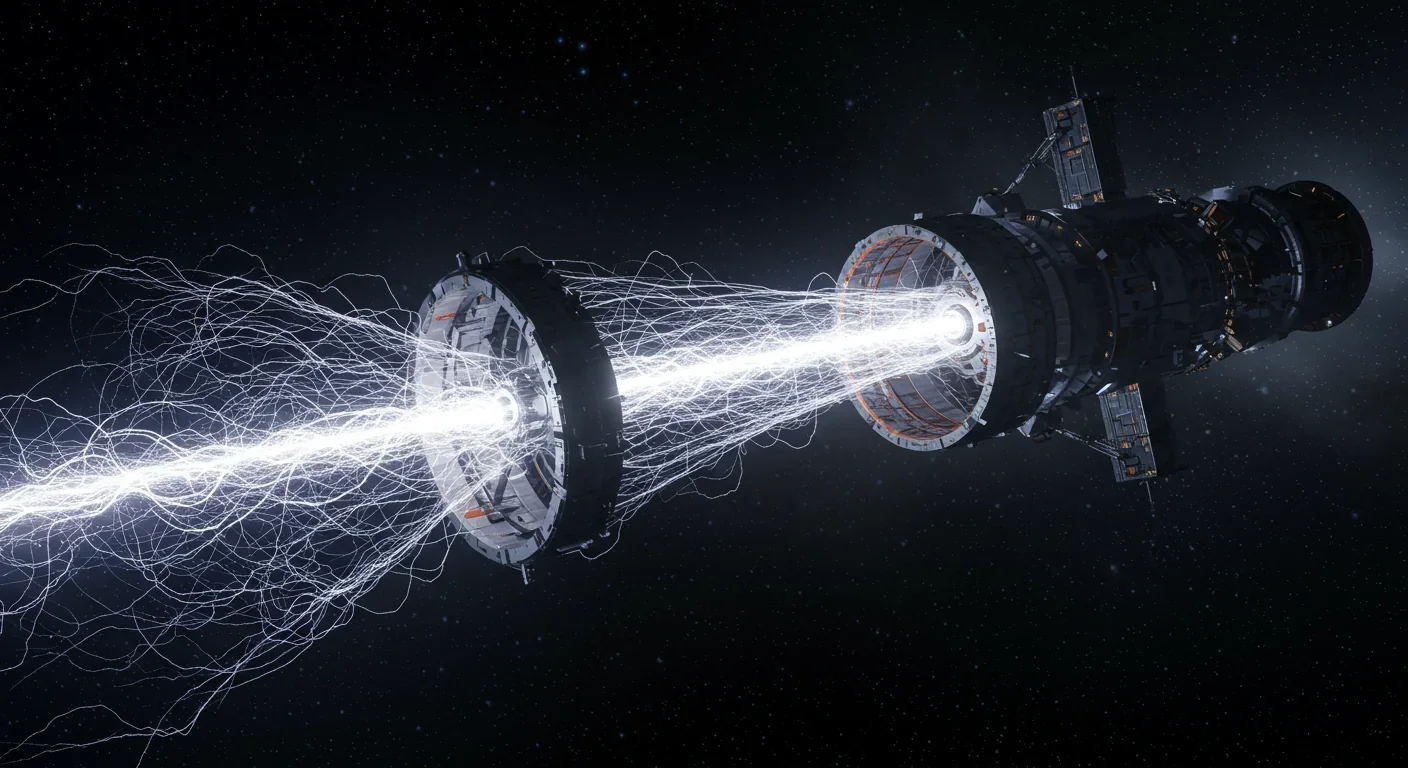
The Bussard Ramjet, proposed in 1960, would scoop interstellar hydrogen with a massive magnetic field to fuel fusion engines. Recent studies reveal fatal flaws: magnetic drag may exceed thrust, and proton fusion loses a billion times more energy than it generates.
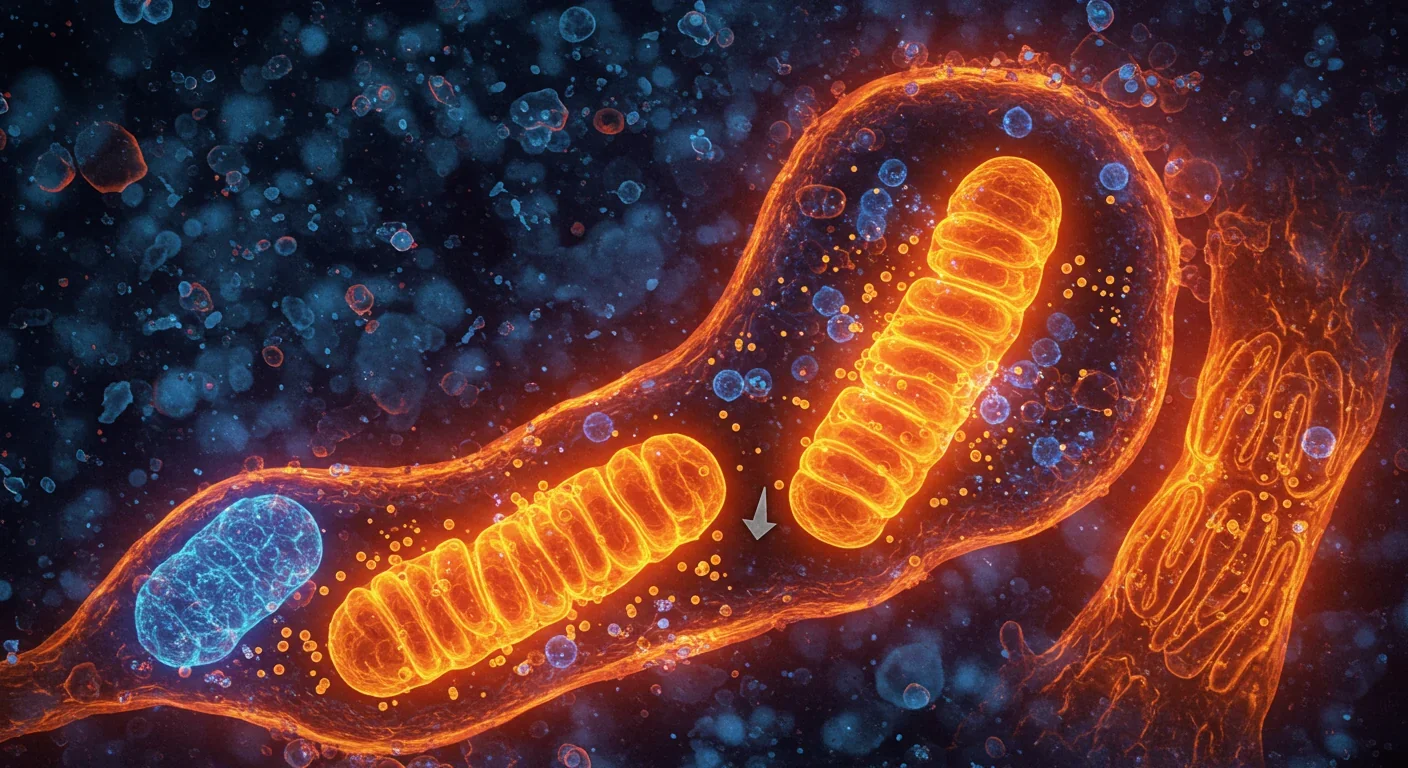
Mitophagy—your cells' cleanup mechanism for damaged mitochondria—holds the key to preventing Parkinson's, Alzheimer's, heart disease, and diabetes. Scientists have discovered you can boost this process through exercise, fasting, and specific compounds like spermidine and urolithin A.

Shifting baseline syndrome explains why each generation accepts environmental degradation as normal—what grandparents mourned, you take for granted. From Atlantic cod populations that crashed by 95% to Arctic ice shrinking by half since 1979, humans normalize loss because we anchor expectations to our childhood experiences. This amnesia weakens conservation policy and sets inadequate recovery targets. But tools exist to reset baselines: historical data, long-term monitoring, indigenous knowle...

Social media has created an 'authenticity paradox' where 5.07 billion users perform carefully curated spontaneity. Algorithms reward strategic vulnerability while psychological pressure to appear authentic causes creator burnout and mental health impacts across all users.
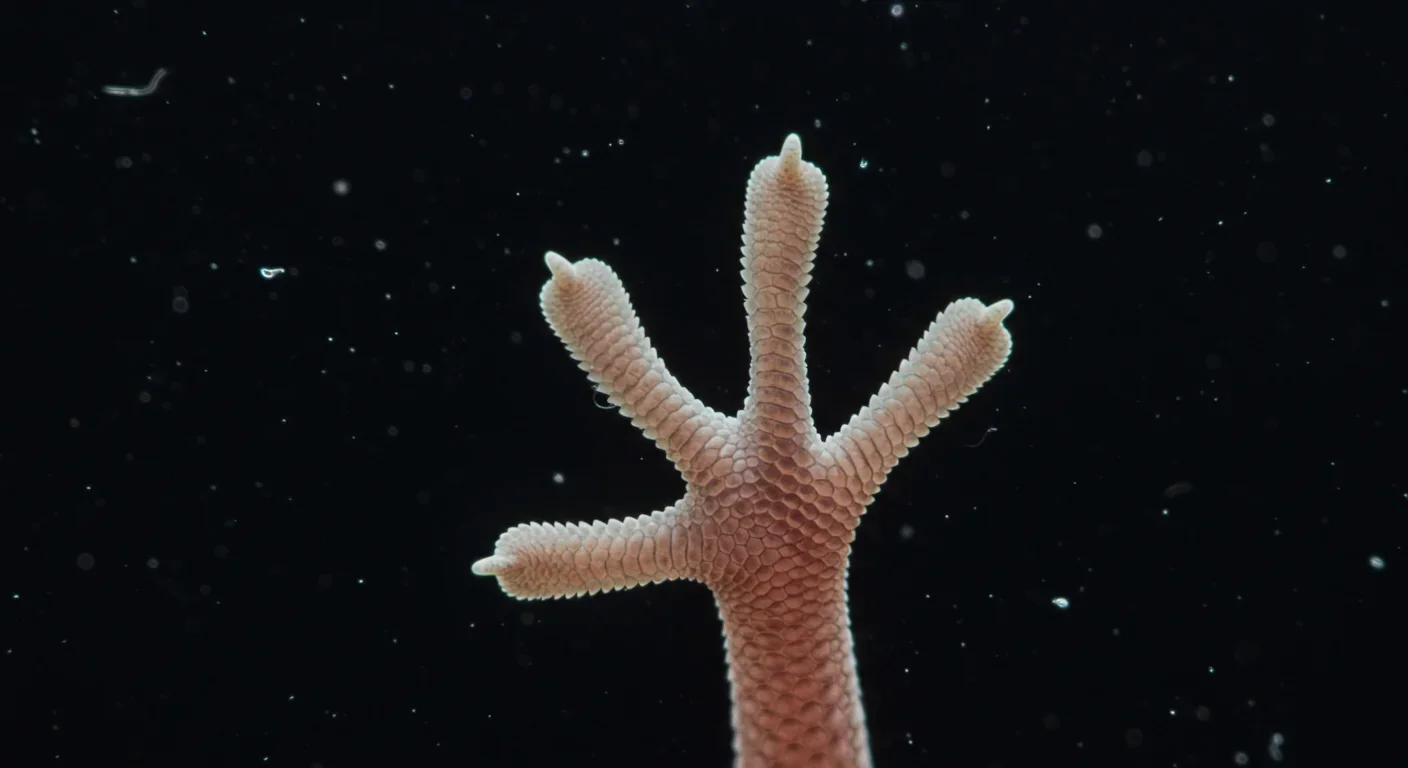
Scientists have decoded how geckos defy gravity using billions of nanoscale hairs that harness van der Waals forces—the same weak molecular attraction that now powers climbing robots on the ISS, medical adhesives for premature infants, and ice-gripping shoe soles. Twenty-five years after proving the mechanism, gecko-inspired technologies are quietly revolutionizing industries from space exploration to cancer therapy, though challenges in durability and scalability remain. The gecko's hierarch...
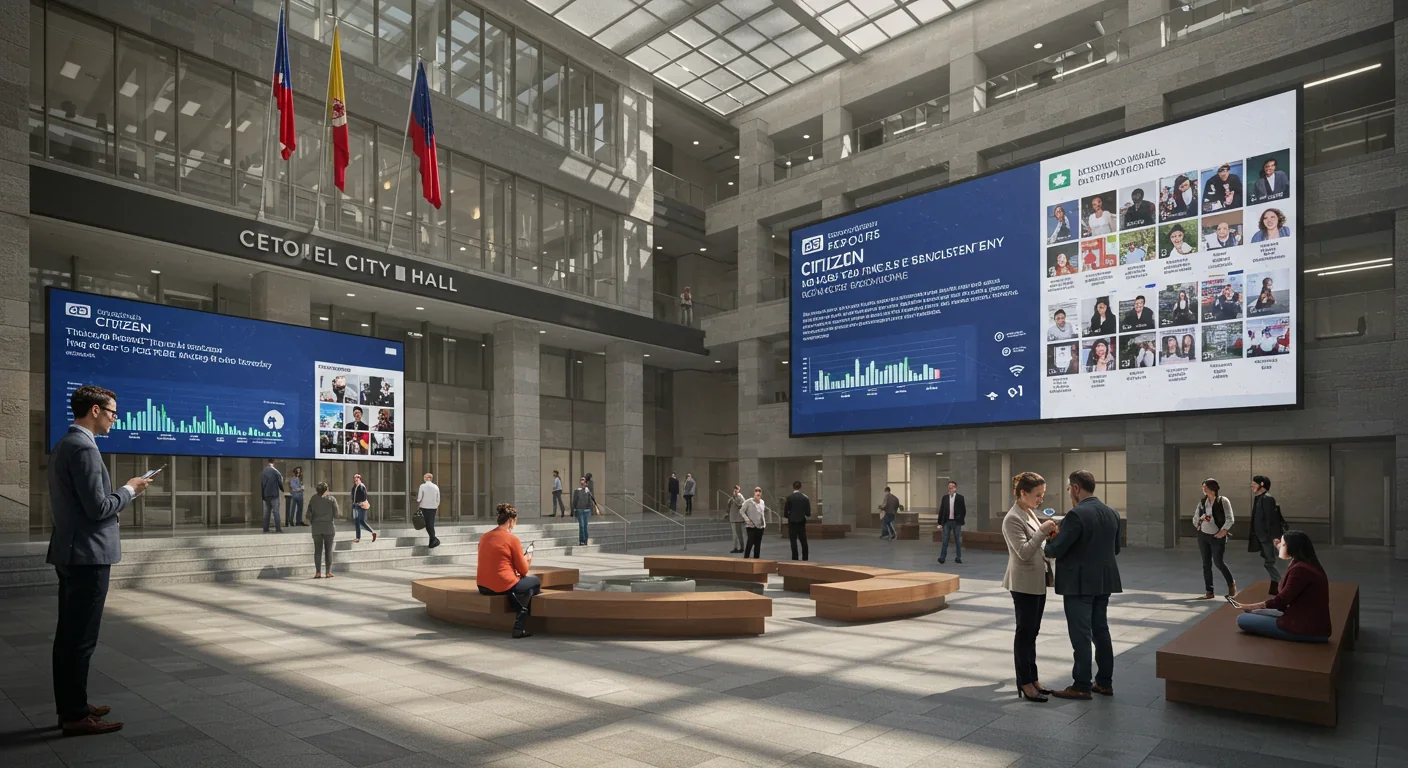
Cities worldwide are transforming governance through digital platforms, from Seoul's participatory budgeting to Barcelona's open-source legislation tools. While these innovations boost transparency and engagement, they also create new challenges around digital divides, misinformation, and privacy.

Every major AI model was trained on copyrighted text scraped without permission, triggering billion-dollar lawsuits and forcing a reckoning between innovation and creator rights. The future depends on finding balance between transformative AI development and fair compensation for the people whose work fuels it.